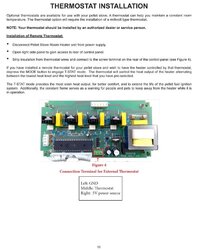Hi,
New here and I found an old post of when someone put a thermostat on their pellet stove. I'm trying to do the same as this old post. I have an older Honeywell dial thermostat, (mercury), that I want to hook up to my new US Stove 5660. Us Stove says this should work. Followed instructions and it makes a different fan noise when I switch to T-STAT mode, but won't react to the call of the thermostat. Can anyone help?
Thanks,
Ed
New here and I found an old post of when someone put a thermostat on their pellet stove. I'm trying to do the same as this old post. I have an older Honeywell dial thermostat, (mercury), that I want to hook up to my new US Stove 5660. Us Stove says this should work. Followed instructions and it makes a different fan noise when I switch to T-STAT mode, but won't react to the call of the thermostat. Can anyone help?
Thanks,
Ed


